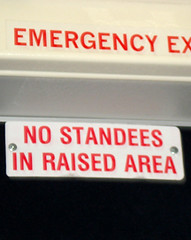
"My idea is fabulous!"
"Your idea is fabulous!"
"He said her idea is fabulous!"
"She said he said her idea is fabulous!"
"See ... they all said my idea is fabulous!"
Yes, yes, but what if it's not? What if the idea isn't so fabulous as is often the case in politics, public relations, public perception, and social media?
After all, echo chambers sometimes promote the silliest of notions, especially when it starts from its central most people, without much thought to what is said or where those messages might go or how they might be interpreted. It's not just social media. It's everywhere.
The messages, both good and bad, bounce around from one "influencer" to another with no real consideration for the customer, client, intended audience, or outcome. However, some of them are heavily promoted with that sometimes unspoken/spoken rule to "always elevate our peers," as if the world really works according to Warren Buffett.
While sometimes it is easy to miss in the world of social media, we all know it exists. Anyone who has served on a professional or non-profit board can tell you that the world works differently when echo chambers take hold. It goes something like this:
The lead influencer proposes that the organization's luncheon (or whatever) be changed to breakfast, based on a successful case study conducted by another organization about 400 miles away. Once proposed, two or three enablers will quickly support the idea simply because of who proposed it.
Sometimes, there might be one lone dissenter; someone who suggests there is no evidence to support a breakfast will be better attended. The criticism is then quickly slapped down by another influencer, who suddenly and casually proclaims they will be the first to reserve a seat after the meeting, which prompts the remaining six board members to look up from their phones and hypnotically nod in agreement. Meeting adjourned.
Two weeks later, just days before the actual event, the organization learns the horrible truth. Only three people reserved seats: the speaker, the initial influencer, and the dissenter.
Sometimes it happens just like that. In fact, for all we know, echoes might have led Edelman to select 25 bloggers to debut Pepsi’s new can design. It makes sense because Edleman, like many social media experts, tends to overstate the role of influencers (probably because they are one). Yet, for all the limited buzz about the Pepsi identity change, it just doesn't strike me like the real thing.
Conversations have outcomes, but outcomes are not conversations.
Greg Ippolito recently wrote an article for Adweek about something similar. He called it "the psychology of sameness" among creative professionals who start to convince themselves to be part of the herd. The end result is a whole lot of non-thinking that he illustrated with this quick two quote story:
"OK," I started, "explain to me why our customers should go to their dealerships for service. Why would that be good for them?"
The AE stared at me with a deer-in-headlights look. "Bee-cause ... " she searched her brain for an answer, "our clients are looking to increase their parts and service revenue?"
Ho hum.
Look, I'm not saying that there is anything wrong with peer participation (assuming you save time for client industry-specific associations), but it never pays to operate exclusively in any industry bubble or you might get stuck in the rut.
And then, before you even know it, your desire to become a "thought leader" leads you to become a "cheer leader" for someone else who is only guessing at echoes too. That would be too bad. The best innovations occur outside the bubbles.




















